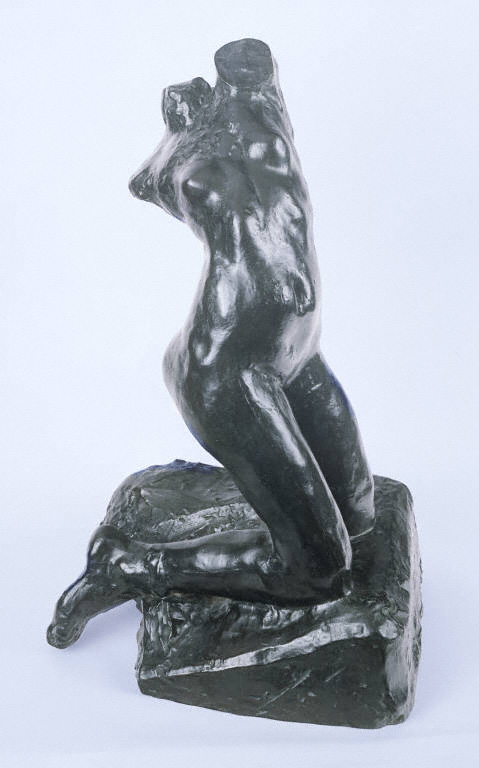
Auguste Rodin, Female Torso, Kneeling, Twisting Nude, Date of modeling unknown; Musee Rodin cast II/IV, 1984. Bronze, overall: 23 3/4 x 12 5/8 x 13 3/4 in. The Phillips Collection, Washington, D.C. Gift of Iris & B. Gerald Cantor Foundation, 2009
Rodin . . . wanted to depict the incomprehensibility of the body as sliding structure. . . . The body in an eternal transformation and interchange with the surroundings.
-Per Kirkeby
(excerpted from Klaus Ottmann’s essay in the exhibition catalogue, Per Kirkeby: Paintings and Sculpture)
As Google reminds us with today’s doodle, the celebrated French sculptor Auguste Rodin (1840-1917) would have been 172 today.
Rodin is a special hero to Per Kirkeby, subject of a current exhibition at the Phillips. In an interview with exhibition co-curator Director Dorothy Kosinski, Kirkeby identified Rodin’s Gates of Hell (1880-c.1890) as his favorite sculpture, calling it “radiant.” Elsewhere, he has referred to the work as a “dinosaur,” likening Rodin’s sculptures to “fossil bones.”
For artist-geologist Kirkeby, Rodin’s work is a telling starting point.



